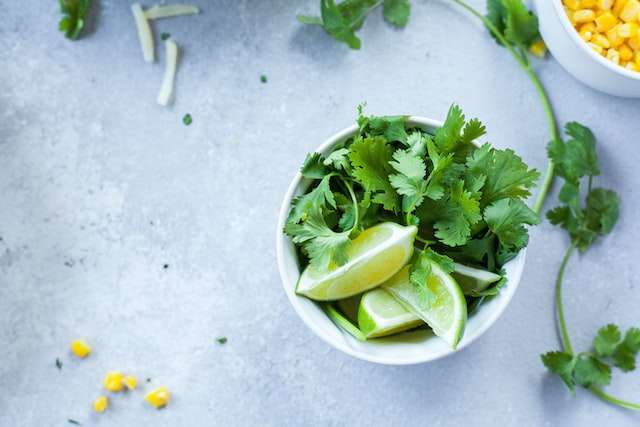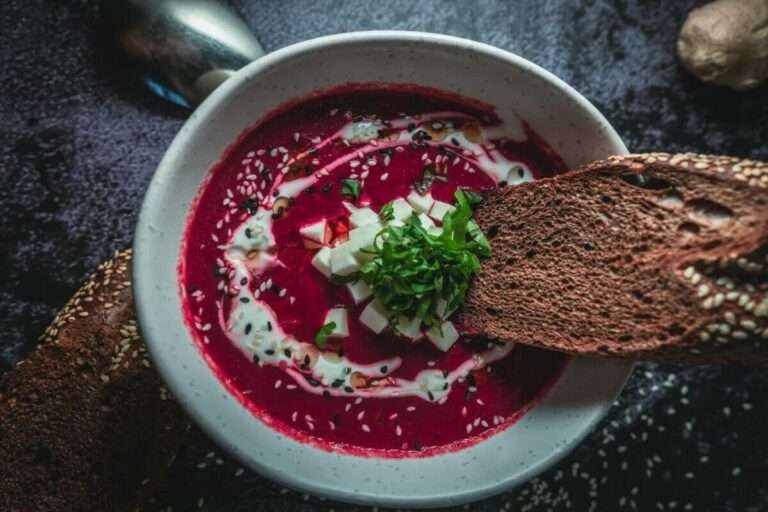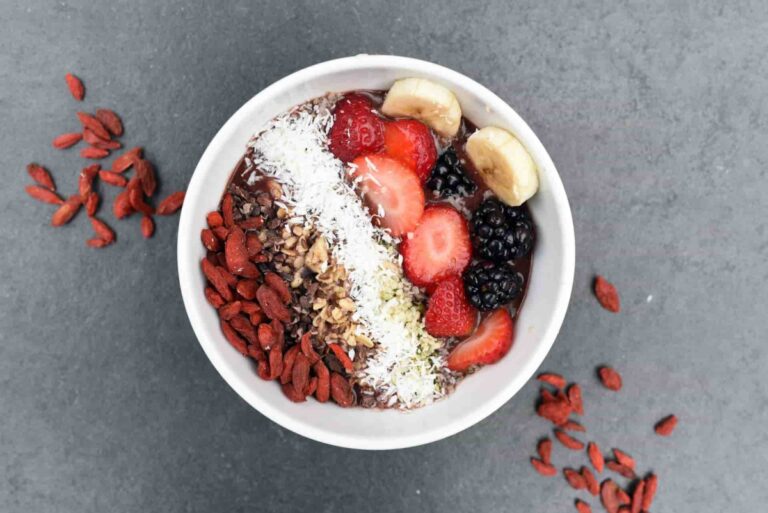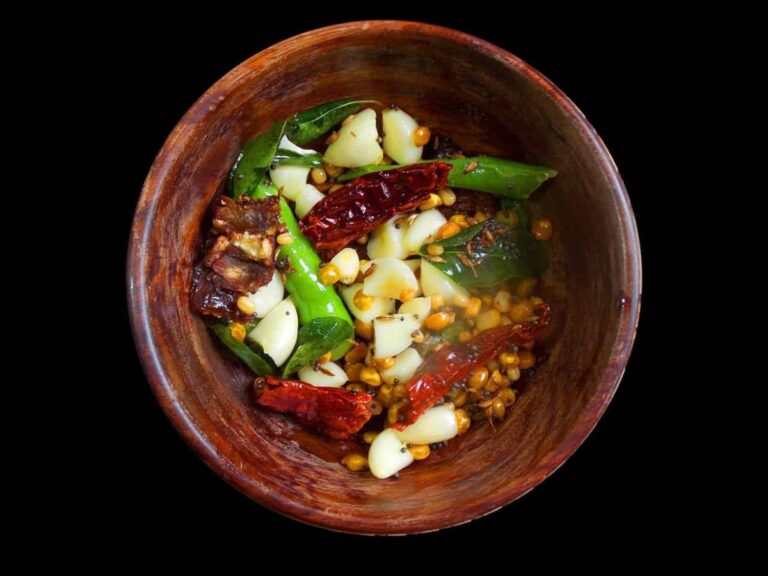33 top parsley kitchen insights and benefits
Did you know that parsley has qualities that make it anti-bacterial as well as anti-fungal?
- It has been shown that the juice that is derived from parsley may improve blood circulation. It is possible to treat small wounds using the plant’s leaves, and the liquid that is taken from the plant’s roots may be used to treat swelling.
- Even though it was considered by Carl Linnaeus to be indigenous to Southern France and the huge island of Sardinia in particular, parsley may be found growing wild across the Mediterranean area and throughout Europe. It does very well in temperate areas with summers that are not too hot or humid, and it need a soil that is both rich and wet in it to flourish. It was not until much later that parsley began to be used in culinary applications; yet, the plant has been grown for more than 2,000 years.
- In some regions of Europe and the Mediterranean, the curly kind of parsley is considered to be the superior choice. Because it looked too much like a dangerous herb known as “fool’s parsley,” people used to avoid an old tradition of avoiding the flat-leafed kind of parsley. This is most likely where the practise originated. Parsley is recommended as a therapy for urinary tract infections, as well as kidney and bladder issues, in a German herbal medicine reference book. The ancient Greeks did not consume parsley, although they did employ it for therapeutic reasons.
- Since the beginning of recorded history, parsley has been used in many culinary purposes. The stems of parsley are typically included in what is known as a “bouquet garni,” which is a traditional bundle of herbs that is used to impart flavour into liquids such as brines, sauces, soups, and stocks. In most instances, the leaves are saved for use as garnish. The stems and leaves may both be cut up and added to soups and stews at the very end of the cooking process in order to create a taste that is reminiscent of fresh greenery.
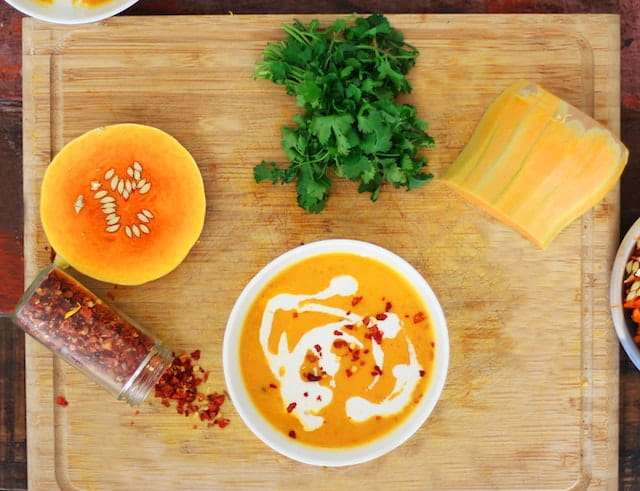
Parsley nutrition values and health benefits
- The calorie count of parsley is minimal, but it contains a significant amount of minerals and vitamins A, K, and C. In addition to that, it is an excellent source of fibre. Vitamin A is an essential nutrient that plays a vital role in determining the overall health of both your eyes and your immune system. In addition to this, it is healthy to your skin and may assist in the improvement of skin conditions such as acne.
- Additionally rich in vitamin K, parsley is a wonderful source of this essential mineral, which is beneficial to the health of both the bones and the heart. In point of fact, all the vitamin K you need in a day may be obtained from only two tablespoons of parsley. Vitamin K is essential for proper blood clotting, which may assist those who are at risk of excessive bleeding avoid losing too much blood. Vitamin K is also important for bone and heart health.
- In addition to being high in vitamin C, parsley is a potent antioxidant that is beneficial to the health of the heart and is necessary for the correct functioning of the immune system. Vitamin C’s antioxidant properties help to save your cells from the damage that may be caused by free radicals, which are unstable chemicals. Additionally, vitamin C is a powerful anti-inflammatory agent.
- In addition to diabetes, high blood sugar levels may be caused by a poor diet and a lack of physical exercise. Diabetes is the most common cause of high blood sugar levels. Those who have high levels of blood sugar in their blood are at a greater risk of developing insulin resistance, diabetes, cardiovascular disease, and metabolic syndrome, which is a cluster of symptoms that includes high cholesterol levels and high blood sugar levels.
- In the developed world, cardiovascular disorders are the main cause of death, including heart attacks and strokes. Heart disease may be caused by a number of factors, including a poor diet, a lack of physical exercise, smoking, and excessive intake of alcoholic drinks. It has been shown that the carotenoid antioxidants found in parsley may promote heart health by decreasing the risk factors for heart disease and stroke. Parsley contains a wide array of plant compounds, including antioxidants.
- Diets that are high in carotenoids, for instance, have been shown to lower the risk factors for cardiovascular disease, including chronic inflammation, high blood pressure, and low-density lipoprotein (LDL) cholesterol. To go more specific, population studies have demonstrated that consuming a diet high in carotenoid-rich foods may reduce the risk of acquiring cardiovascular disorders such as coronary artery disease.
- Throughout the course of the day, your kidneys act as filters, removing waste and excess water from your blood. This waste and water are then expelled from your body through urine. When urine becomes more concentrated, it is possible for mineral deposits to form. These deposits may lead to a serious condition known as kidney stones, which is a condition that can be highly painful.
- Parsley has also been demonstrated to have anti-inflammatory properties, which may be linked to the presence of antioxidants such as flavonoids, carotenoids, and vitamin C in the herb. In addition, the anti-inflammatory properties of parsley may help preserve the health of your kidneys by reducing high blood pressure. High blood pressure is one of the primary risk factors for the development of renal illness.
- It contains a high quantity of nitrates, which help to dilate blood vessels, which in turn improves blood flow and lowers blood pressure. Parsley has a high content of nitrates. According to the findings of certain studies, eating foods that are high in nitrates like parsley can make it easier for the body to keep its blood pressure at a normal level.
- Maintaining healthy kidney function and lowering the risk of developing kidney stones may be facilitated by parsley’s anti-inflammatory properties, as well as its potential to regulate the pH of urine and bring about a drop in blood pressure.
100g of parsley has 36 calories (150kj), 3g protein, 0.8g fat, and 6g carbs, including 3.3g fibre.
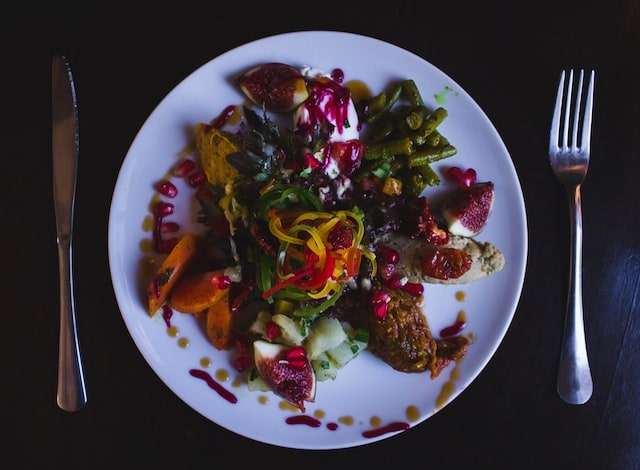
How to store parsley and how to buy them
- If it is stored in the refrigerator in a plastic produce bag that is airtight, fresh parsley has a shelf life of between five and seven days. Wrapping the bunch in a damp paper towel and putting it in a bag with a zip-top will allow you to extend the freshness for an additional 10 to 14 days. These times are merely approximations, but we wanted to be as accurate as possible. The length of time that parsley may be stored for varies according on a number of factors, including how fresh it was when you got it, how thoroughly you packed it, and so on.
- Fresh parsley, like most other herbs, tends to become limp and mushy after some time has passed. In addition, it seems that the procedure will pick up pace after the bunch has gotten moist. To solve this problem, you may use a paper towel. It soaks up any additional moisture, preventing droplets of water from forming on the parsley as a result. But what is even more essential is that it be damp (not wet), since this will either stop or, at the at least, considerably slow down the water loss from the very beginning. Because of this, the parsley will remain fresher for a longer period of time, which is why a dry paper towel will not be nearly as helpful in preserving its quality.
- It is sufficient to only leave your parsley within the produce bag it came in with the bag well tied for the parsley to keep its usable freshness for up to a week. The only thing left to do is twist the bag and store it in the refrigerator with the seam facing down. Because the parsley cannot lose any of its natural moisture because the bag is sealed, it does so at a far slower rate than it would if the bag were not.
- The process of freezing parsley is really straightforward. After giving the herb a wash and a dry, you next chop it up before placing it in a freezer bag and placing it in your freezer. After washing the leaves, the step that requires the greatest attention to detail is the one in which they are dried. When the leaves are completely dehydrated, you cut the parsley as you normally would for the recipes, and then you store it in a baggie for later use. After that, you squeeze out any remaining air from the bag, ensure that it is well sealed, and place it in the freezer.
- There is also the option of preserving your parsley by freezing it in cubes of oil that has been infused with the plant. Throw a cube or two of this into your favourite stew or soup and get an immediate flavour boost.
- Before using the parsley, strain it through a sieve to get rid of any grit or debris.
- Once you have finished washing the herbs, blot them dry with paper towels or spin them dry in a salad spinner to get rid of any remaining moisture.
- Put the parsley in a food processor and pulse it until it is finely minced (about 30 seconds). Put 2 tablespoons of olive oil or flavourless vegetable oil into the food processor and blend until smooth.
- The flavour of the herbs will be preserved throughout the freezing process, and the frozen oil will melt faster than the water.
- If the parsley has become slimy or mushy, throw it away. These are the normal symptoms of water loss, and if your parsley reaches this stage, it is beyond the point of no return in terms of its use.
- The leaves have become a yellowish tone or have another kind of discoloration. Even the most vibrantly green bunches often include a few sprigs that have lost their colour; I recommend throwing away these sprigs either before or after washing the bunch. They are not spoilt in the traditional sense of the word, but they will undoubtedly have a bitter or unpleasant flavour, which will likely rub off on whatever you are preparing. Even if they will not make you sick if you use them, it is advisable to throw them away.
- The whole lot has an unpleasant odour. If the fresh parsley you bought smells rancid, you should throw it away since it is spoiled.
- It smells musty and rotten. Mould may develop when there is an abundance of moisture. It is not very typical for this to happen with herbs, but if you see any mould developing on your bunch, it is too late to save it.
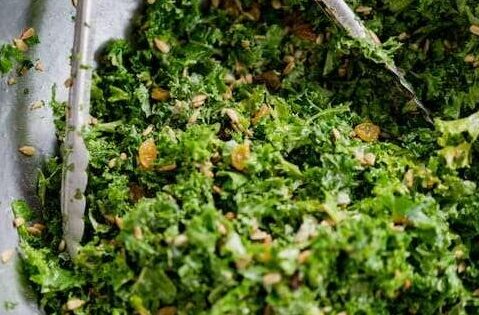
Cooking techniques, secrets, and tips from the kitchen
- The flavour of parsley is described as being crisp and clear, with hints of pepper and citrus. The use of parsley in a recipe not only lends the finished product a vivacious appearance but also amplifies the tastes of the other components. Curly parsley is a bit more delicate and rather flavourless, making it excellent for fine cutting and adding to a meal at the very last. On the other hand, Italian parsley is more flavourful and is more suited when you want to add a green flavour note. You may knot the stems of curly leaf and Italian parsley with some twine, add them to the pot, and then remove them before serving.
- When using sprigs of parsley, it is recommended to finely chop them with a sharp knife so that they may be sautéed to provide a flavour basis for soups, stews, or broths. This method is very effective. They should be added at the beginning of the process of cooking, along with any other aromatics that are appropriate, such as onions and garlic. It is also recommended to set aside a table spoon or two of the mixture to be used as a fresh garnish just before serving the dish in order to give it an extra boost.
- When using parsley in a recipe as a bouquet garni, just tie several sprigs together with complementary herbs of your choosing, put them to your stock pot or saucepan at the beginning of the cooking process, and then remove them just before serving. The combination of parsley, thyme, and bay is by far the most common choice for a bouquet garni. Other options for savoury pairings include sage, rosemary, and oregano; nevertheless, you are free to experiment with the many ways in which you might use parsley in your garni.
- In many regions of the globe, parsley is mixed with other types of leafy herbs and consumed as a salad green. I have grown to really like salads that include a significant quantity of parsley, and I think you will too. In addition, I like it very much as a component in recipes that have ground beef, such as soups or stews. Although it goes well with a wide variety of other tastes, I find that tomatoes, cucumbers, dry beans, meat, poultry, lemon, garlic, mushrooms, peppers, and squash are particularly complimentary to the flavour of parsley.
- Some people have a negative impression of English parsley sauce because they associate it with gloopy, cold sauce. While this sauce may be a throwback, it certainly does not belong in obscurity just because it is no longer trendy. Despite its ease of preparation, parsley sauce has the potential to be rather tasty. We will be making a parsley sauce using fresh parsley, butter, English mustard, milk, and flour. This is a wonderful way to utilise plenty of fresh parsley and provide a mild flavour to a standard white sauce. The baked or pan-fried fish or the baked ham are delicious with the creamy parsley sauce, which is ready in approximately 20 minutes. Other fresh herbs, lemon juice, or Parmesan cheese are also welcome additions.
- It is common practise to categorise vinaigrettes according to the kind of vinegar that is used in the dressing; examples include balsamic vinaigrette and red wine vinaigrette. But you may also tell them apart based on the kind of oil that was used and the spices that were added to it. For example, Italian vinaigrette is prepared using olive oil rather of the typical vegetable oil that is used in other vinaigrette recipes. This is the primary distinction between Italian vinaigrette and the basic vinaigrette that it resembles. The fact that it contains oregano, parsley, and garlic, three components that are often associated with Italian cuisine, also plays a role in the naming of the dish.
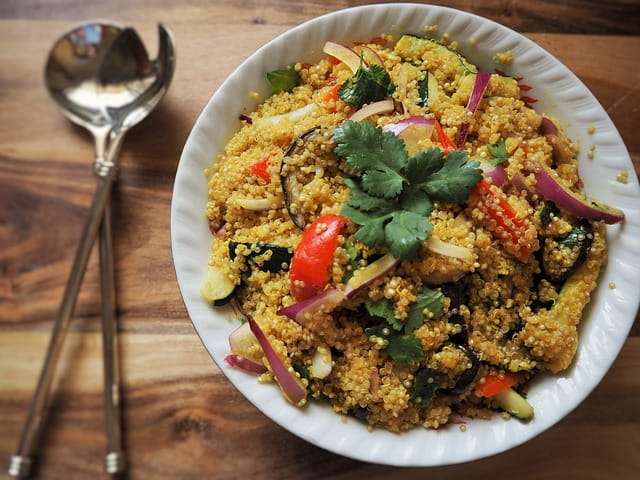
History of parsley from the beginning until today
- It is estimated that parsley has been cultivated for over two thousand years, and that it was initially used as a medicinal herb before making its way into the kitchen. Parsley has been used medicinally for thousands of years. It has been known to alleviate stomach pains, respiratory problems, and tooth pain.
- The ancient Romans established a tradition of using parsley as a garnish, which has a rich and famous history. To alleviate the “morning after the feast” feeling that plagued many individuals in the Middle Ages, the Romans turned to parsley.
- The idea that chewing a few fresh leaves of this plant at the end of a meal helps to freshen the breath dates back millennia. People also thought that if they ate the leaves, their mouths and breath would no longer smell like garlic.
- Parsley’s widespread use as a culinary herb in Europe probably began somewhere around the Middle Ages, but the precise chronology is unknown. Historians debate whether or whether its extensive success may be attributed to Charlemagne, who reportedly had it cultivated on his territories.
- The plant was introduced to England by the Romans, who ruled the nation at the time. The first European settlers to the Americas introduced this plant for its culinary uses.
- Because of its preference for growing on rocky slopes in Greece, the name “parsley” is derived from the Greek word petrose, which means rock.
- Parsley is widely used in many different cuisines, including those of the Middle East, the Mediterranean, Brazil, and the United States. Fresh green parsley is often used as a garnish for a wide variety of dishes, including boiled or mashed potatoes, rice dishes (risotto or pilaf), fish, fried chicken, lamb, geese, and steaks, and meat or vegetable stews (including shrimp creole, beef bourguignon, goulash, or chicken paprika)
